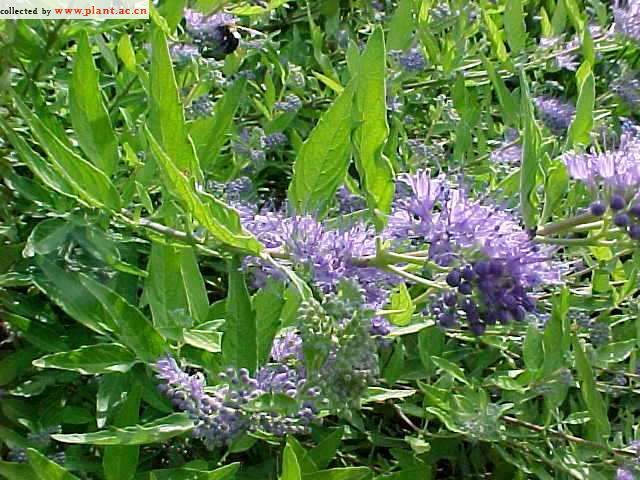Caryopteris x clandonensis Worcester GoldBluebeard
科:马鞭草科
Family:Verbenaceae
属:莸属
common name:Bluebeard
introduce:Plant Type: Deciduous shrub
Family: Verbenaceae
Missouri Native: No
Native Range: None
Height: 2 to 2.5 feet
Spread: 2 to 2.5 feet
Bloom Time: July - September
Bloom Color: Blue
Sun: Full sun (only)
Water: Medium moisture
Maintenance: Low
General Culture:
Easily grown in average, medium wet, well-drained soil in full sun. Prefers loose loams. Tolerates some drought. Intolerant of wet, poorly-drained soils. Roots are winter hardy to USDA Zone 5, but top growth is only reliably hardy to USDA Zone 7. Consequently, plants are generally grown as shrubby, soft-wooded perennials north of USDA Zone 7 by pruning stems back hard each year in early spring. Regardless of pruning intentions, stems will often die to the ground in the cold winters of Zones 5 and 6, with roots surviving to push up new stems in spring. Even in warm winter climates where the stems usually survive winter, gardeners frequently still prune the plants back hard in early spring to promote vigorous new stem growth. Flowering is unaffected by spring pruning because plants bloom on new growth.
Noteworthy Characteristics:
Bluebeard (also commonly called blue spirea or blue mist) is a low-mounded, deciduous shrub that is valued for its aromatic foliage and late summer flowers which are said to resemble clouds of blue smoke or mist. Clandonensis hybrids typically produce about 18-30" of growth per year, so total shrub height (usually from 2-3) depends in large part upon the extent of winter dieback and/or the annual spring pruning. Worchester Gold features golden, ovate to lance-shaped leaves (to 1.5" long) and a profuse, shrub-covering bloom of fragrant, light lavender-blue flowers in terminal and axillary clusters (cymes) from late summer into fall. Foliage is aromatic when brushed with a hand. Flowers are very attractive to butterflies, bees and other beneficial insects.
No serious insect or disease problems. Crowns may rot in wet, poorly-drained soils.
Uses:
Perennial borders. Shrub borders. Very effective in large groups or massed. Also effective a low hedge. Valued for its late summer to fall flowers when few other shrubs are in bloom.
